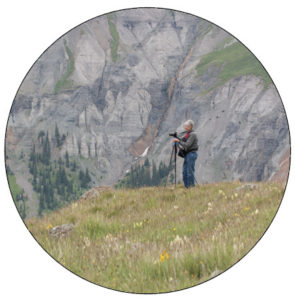
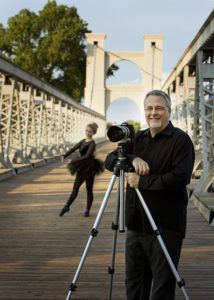 Digital Sensors: Size Matters
Digital Sensors: Size Matters
by Steve Kozak
M. Photog., CR.
PPA Certified
This lesson will help you understand how the size of the sensor in your digital camera impacts the way the image is recorded.
To begin the discussion of sensors, we need to understand a little something about a lens.
A lens throws a circular image onto the film/sensor plane. But your sensor is not round – it is rectangular. So the circular image thrown by the lens has to be large enough to cover the sensor from corner to corner.
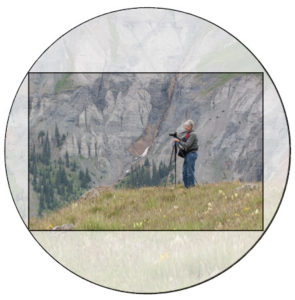
The illustration at left represents a full frame, digital sensor well within the circular projection of the image by the lens and the resulting image that would be recorded by the sensor.
This is also how a 35mm film camera would record the image. This is because the 35mm film frame is the same size as the full-frame digital sensor.
Digital cameras are generally offered with “full frame” or “cropped” sensors. Remember, full frame sensor will record an image in the same way it would have been recorded on a piece of 35mm film.
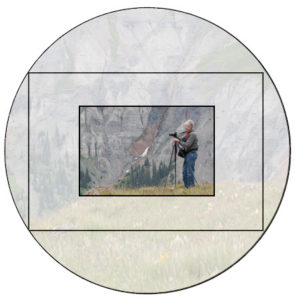 Cropped sensors are smaller than full frame sensors. Camera manufacturers use a variety of cropped sensor sizes in their various product lines.
Cropped sensors are smaller than full frame sensors. Camera manufacturers use a variety of cropped sensor sizes in their various product lines.
Cropped sensors may record about half the area of a full frame sensors(1.6x). Others may record about 2/3’s of the image area of a full frame sensor (1.3x).
The image at right illustrates a cropped sensor that is about half the size of a full frame sensor and you can see it records much less of the scene that the image above.
This has the effect of recording the image with more of a telephoto effect when compared to the image recorded on a full frame sensor because the cropped sensor is only using a portion of the entire image being projected by the lens onto the sensor plane.
Your camera instructions will indicate the size of the sensor and will also provide a “Multiplication Factor” to help you determine the net effect of this “magnification”.
To determine this telephoto effect, multiply the focal length by the multiplication factor. For example, a 100mm lens on a camera with a cropped sensor and a multiplication factor of 1.6 means that the “apparent” focal length would be compared to a 160mm lens on a full frame sensor camera. (100mm x 1.6 = 160mm)
A 200mm lens on a camera with a half frame sensor (1.6x) looks like a 320mm lens on a full frame sensor.
This is really sort of cool for images where getting closer to a distant subject is desired. The downside is when you want a wide angle image and the sensor does not record as much of the scene as you would like. Remember, using a traditional, 28mm wide angle lens on a cropped sensor with a 1.6 multiplication factor is really like having a 45mm lens.
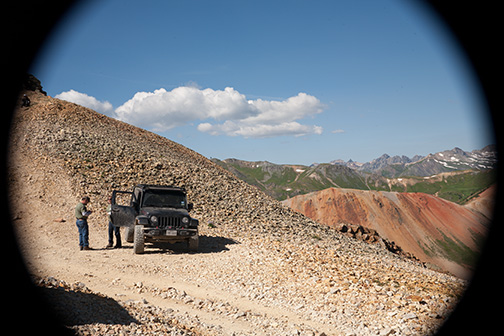 Something Else You Should Know
Something Else You Should Know
There are lenses built just for cropped sensors. These specialty lenses throw a smaller image circle that just covers the smaller sensor from corner to corner. This results in your being able to record an image with a half frame sensor as you would with the equivalent lens on a full frame sensor. Sounds good, right?
The problem occurs when you decide to upgrade to a full frame sensor camera. These lenses will not move with you to a camera with a full frame sensor as the circle is too small to cover the sensor from corner to corner. The result is that you get a circular image with black edges as seen in the image left.
When purchasing a new lens, it is a good idea to ask if the lens you are considering will work on a full frame sensor camera should you decide to upgrade at some point. Then you can decide if that is the right choice for you.
